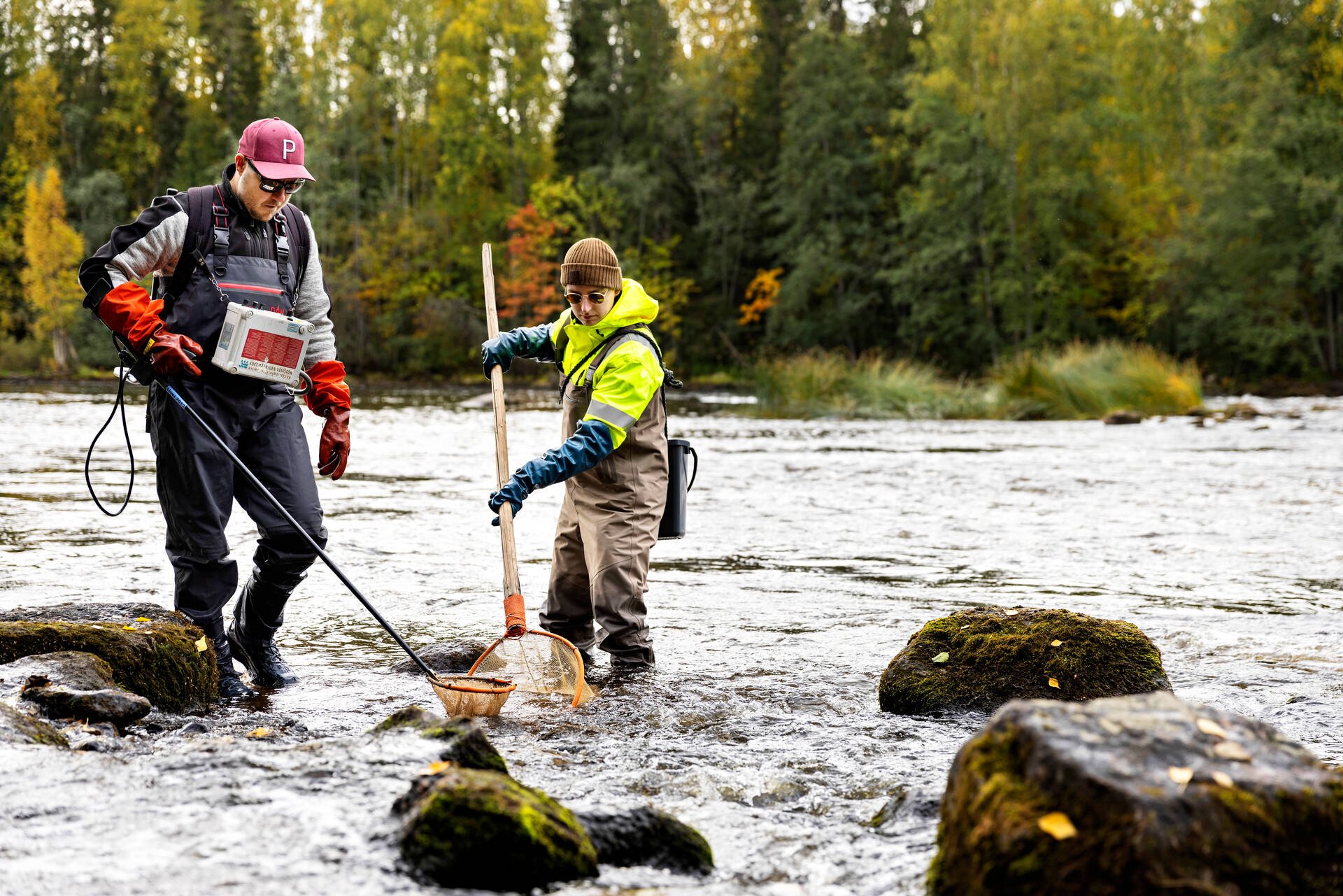The forest industry began to develop along the Äänekoski river in 1896. A sawmill, groundwood mill and paperboard mill were built first. The first pulp mill began operations in 1938.
The mill brought prosperity to the region, but its environmental impacts were intolerable by modern standards. The waste liquor produced in the digester was released untreated straight into the waterway below.
“When waterway impacts began to be surveyed along the Äänekoski-Vaajakoski route in 1975, the waters were found to be in a disastrous condition”, says Antti Leppänen, a fish biologist at KVVY Tutkimus Oy, which monitors fish populations in cooperation with Metsä Fibre.
Rising environmental awareness in the 1980s
According to Anna Riikka Nickull, Metsä Group's Environmental Manager, the turn for the better happened in the early 1980s, when Metsä-Botnia, now known as Metsä Fibre, decided to build a new and larger pulp mill in Äänekoski.
"The Supreme Administrative Court set unprecedentedly tight emissions limits for the pulp mill. An activated sludge plant was built for the mill, and it contributed to rapidly cleaning the waste-water”.
In the 40 years since, technology has progressed by leaps and bounds. The current bioproduct mill operates within the same wastewater permit limits, despite production volumes that are nearly three times greater.
Today, the wastewater is sent to a multistage biological wastewater treatment plant with an aeration basin, where microbes break down its oxygen-consuming matter into carbon dioxide and water. If required, a final chemical treatment can be included in the tertiary phase.
“The mill conducts numerous analyses of the wastewater and the treatment plant to monitor their use and load”, says Nickull.
Environmental impacts
All this environmental work is felt in the nose - and is also reflected in the waterways: nowadays, Kuusaankoski rapids are a popular recreational spot and one of the few breeding sites for the endangered brown trout.
"Environmental impact monitoring is an important part of the activities of Metsä Fibre’s mills, and this work is carried out in close cooperation with experts companies and authorities”, says Nickull.
Along the Äänekoski-Vajaakoski waterway, for example, fishery observations are carried out to get the best possible picture of the state of the waterway.

Air quality index available to all
The Äänekoski bioproduct mill also monitors air quality on a daily basis and collects data on emissions - such as particulate concentration, sulphur dioxide, nitrogen oxides and total reduced sulphur (TRS). The mill’s environmental permit sets limits on all of them.
The data is public, meaning that anyone can go to the Finnish Meteorological Institute’s website and follow the air quality index calculated from the measurements and results.
Recovery boiler plays a key role
At the Äänekoski bioproduct mill, the recovery boiler plays a key role in the management of air emissions. An appropriately dimensioned air system supports efficient combustion and the management of nitrogen oxides. Particulate emissions have been curbed with effective electrostatic filters, and sulphur emissions have been minimized with appropriate fuel choices.
No fossil fuels are used in the bioproduct mill’s processes. Instead, all the energy needed is produced from the side streams of wood processing.
"By closing the chemical cycles, we have successfully minimized the emissions from the operations and reduced the volume of chemicals transported from outside the mill," says Nickull.
"The permit conditions determine the upper limit of loads that the environment can copy with withour being adversely impacted. It is important for us to remain clearly below the permit limits," says Nickull.
The article was originally published in Metsä Fibre's Fibre customer magazine 2022-2023, where you can read the full story.
